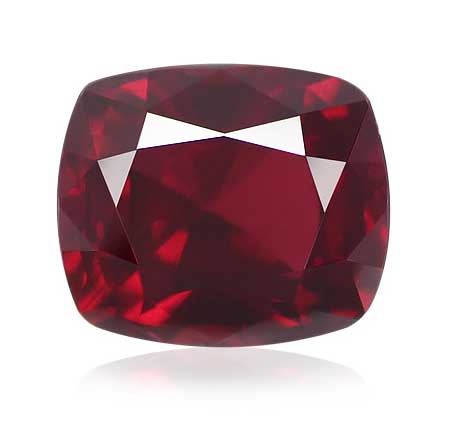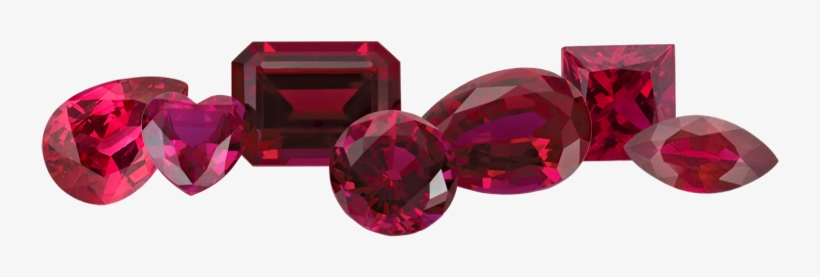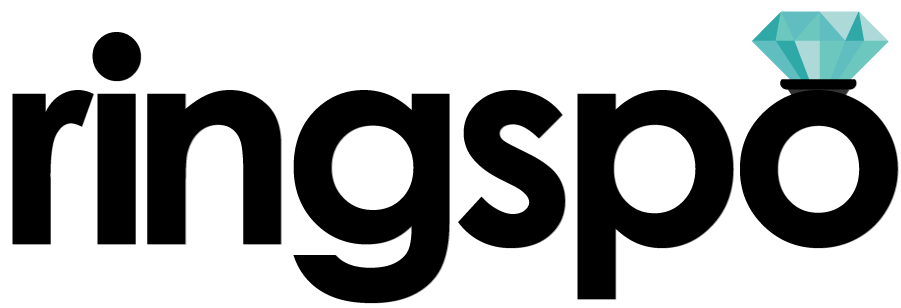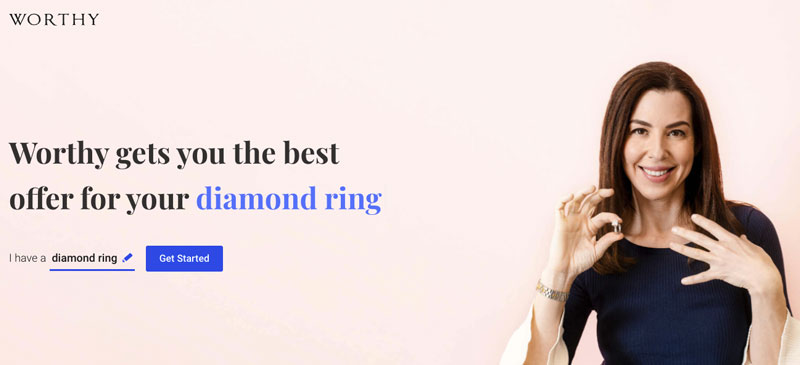Ruby Value: Understand How to Get The Most When Selling Ruby Jewelry
Plus: The Guide to Ruby Buyers and Where To Sell

By Alastair Smith · Updated: June 13th 2023
If you’re lucky enough to own a piece of ruby jewelry, you’ve got one of the world’s most valuable gemstones.
In fact, they can sometimes be worth even more than diamonds of the same size!
But how much is your ruby truly worth?
That’s the question we’ll help you answer in this article.

Ringspo is reader supported
Ringspo is reader-supported, which means we may receive a commission if you click a link to a retailer & subsequently make a purchase.
We feature links to several retailers to help readers find the one that is the best fit for them. Find out more about how Ringspo works here.
Three things to know if you are looking to sell your ruby jewelry
- Selling a ruby is like selling a second-hand car – you won’t get the ‘list price’ ie. the appraisal value
- The color if the most important in deciding the value of your stone – everything else is secondary, including carat weight
- Finding the right buyer is key to get the most money possible. We recommend Worthy as they will get your ruby jewelry out in front of as many potential buyers as possible, which can increase you sale price.
Why Your Receipt or Appraisal Isn’t the Best Indicator of What Your Ruby is Actually Worth:
First-off, we’re going to get this slightly awkward bit out of the way.
While you may have the original purchase receipt or an appraisal for your ruby jewelry that has a price or a valuation on it, they almost certainly don’t reflect the current market value of your ruby if you were trying to sell it.

The reason for this is that anyone who is going to buy your ruby will be looking to sell it for a price that is appropriate for a pre-owned piece of jewelry. Plus, they need to cover their own costs and build in some profit margin for themselves.
What appraisals or a receipt are useful for:
Both a purchase receipt and an appraisal should contain essential information about your ruby such as its carat weight, color, clarity, cut, origin, and any treatments it has undergone.
They should also detail the type and quality of the metal and any other gemstones included in the jewelry.
This is all essential information that you’ll need when selling your ruby as it will allow potential buyers to understand what you have.
How Ruby Prices Have Changed Over Time
Just as with new rubies, the prices of used rubies have changed over the last couple of years. The good news is used ruby prices saw a significant increase due to:
- Scarcity of Fine-Quality Rubies: High-quality rubies, especially those that are larger in size and exhibit vivid colors, are rare. This scarcity drives up their demand and value.
- A Growing Interest in Vintage and Antique Jewelry: As more collectors and investors take a liking to vintage and antique pieces, the demand for used rubies has grown. These unique pieces often carry a rich history and distinct charm that new pieces may not possess.
- Preference for Natural and Untreated Rubies: As knowledge of gemstones becomes more widespread, there’s been an increasing preference for natural, untreated rubies. These rubies are rarer and hence, more valuable than their treated counterparts.
- Recognition of the Historical and Cultural Significance of Rubies: Rubies, especially those from famous sources such as Burma and Kashmir, are cherished for their historical and cultural significance. This recognition adds to their allure and value in the market.
In the next section, we’ll delve into the specifics of ruby valuation, understanding how each characteristic of your ruby contributes to its overall worth.
Basics of Ruby Pricing
When we talk about the value of a ruby, we’re really talking about how much someone would be willing to pay for it.
This is typically measured in price per carat, which can range quite a bit.
For instance, a 1-carat ruby can cost anywhere from $100 to over $10,000, depending on its quality.

The quality of a ruby, like any gemstone, is largely determined by the Four Cs: Color, Clarity, Cut, and Carat weight.
Understanding these elements and how they influence a ruby’s value is essential to getting the best price for your ruby.
The Importance of Color in Ruby Pricing
Color is the most significant factor in determining a ruby’s value. When we talk about color, we’re actually referring to three separate aspects: hue, saturation, and tone.
- Hue is the basic color of the ruby. Although rubies are generally red, they can also exhibit shades of pink or purple.
- Saturation refers to the intensity or purity of the color. A ruby with high saturation will display a rich, vivid color, while a ruby with low saturation might appear dull or washed out.
- Tone is the lightness or darkness of the color, ranging from light to dark.

The most valuable rubies possess a pure red hue, high saturation, and medium tone. These are known as ‘pigeon’s blood’ rubies, a term that refers to the highly prized, vibrant red color of these stones.
The hue, saturation, and tone can vary depending on the ruby’s origin. For example, Burmese rubies tend to be more red, while Thai rubies can often have a brownish tinge.
To accurately evaluate the color of your ruby, consider using a color chart or a gemologist’s loupe. This can help you compare your ruby’s color with other examples, giving you a better idea of its value.
Why ‘Pigeon Blood’ Rubies Are the Most Expensive
The term ‘pigeon blood’ refers to rubies that possess a highly saturated, pure red color:

The high demand for this color, combined with its rarity, means that ‘pigeon blood’ rubies command the highest prices in the market.
The Impact of Ruby Origin on Value
Rubies are found all over the world and possess distinctive qualities that correspond to their country of origin.

- Burmese rubies, particularly those from Mogok and Mong Hsu, are considered the most valuable due to their distinctive deep-red color and the frequency of “pigeon blood” rubies found there.
- African rubies from Mozambique and Madagascar are the second most popular, known for their dark-red color tinged with reddish-purple.
- Rubies from other countries such as Sri Lanka, Thailand, Vietnam, Australia, the United States, and Nepal also have value, but these are generally not as highly regarded or valued as Burmese rubies.
- Rubies from Kenya, Tanzania, Afghanistan, and Pakistan.
The Effect of Treatments on Ruby Pricing
Rubies that have not been heated or treated in any way to enhance color are the benchmark and are priced the highest. However, completely untreated rubies are quite rare and heat-treated rubies are much more frequently found.
The value difference between a heated and unheated ruby can be significant, especially for larger stones and those of high quality.
For instance, an unheated Burmese ruby of high quality could cost up to $20,000 per carat, while a comparable heated ruby might cost around $7,000 per carat.
The difference in price for African rubies between heated and unheated is less dramatic, with a 1 carat unheated ruby valued up to $2,000 per carat and a heated ruby of similar qualities costing approximately $1,500 per carat.
Clarity, Transparency, and Ruby Value
Clarity in rubies refers to the presence or absence of natural inclusions or flaws, such as cracks, bubbles, or foreign materials. A general rule is that the value of a ruby increases as its clarity improves.
All natural rubies have some level of inclusions, and rubies are generally more included than other gemstones like sapphires.
“Eye-clean” rubies (those free of inclusions visible to the naked eye) are rare and command higher prices.
However, some inclusions, if they create a desirable optical effect, can enhance the value of the ruby, such as star rubies or those with a “silk” appearance.

Examination of a ruby’s clarity and inclusions is best done using a magnifying glass or a microscope.
If a ruby doesn’t appear to show any inclusions at all, it could indicate that the ruby has undergone some treatment or is synthetic.
How cut and shape affects ruby pricing
The cut of a ruby significantly contributes to its overall value.
This encompasses not only the shape of the gemstone but also its proportions, symmetry, and polish, all of which affect its brilliance and appearance.
The “cut” in this context is not just about the ruby’s shape, but also about how well it has been shaped and faceted. The quality of the cut can also influence how well the ruby displays its color and clarity.
There are many shapes and styles of cuts for rubies, including round, oval, cushion, pear, marquise, and emerald cuts. Certain cuts may command higher prices due to their popularity or the skill required to achieve them – oval and cushion cuts are popular for their elegant and classic appearances, and are often priced higher.

Some cuts require more material to be removed from the raw gemstone, which can increase their cost. Round and emerald cuts, for instance, are generally more wasteful in terms of material compared to other shapes and therefore may command higher prices due to the larger initial size of the raw gemstone needed.
The proportions and polish of a ruby also play a part in determining its value. Proportions refer to the balance between the size, shape, and weight of the ruby. Unlike round diamonds, there is no recognised standard from GIA or any other grading authority for what constitutes a well-cut ruby. However, a well-proportioned ruby will have a good balance between these three factors, contributing to its overall beauty.
The polish of a ruby refers to the smoothness of its surface, which affects how well light reflects off it and therefore the ruby’s shine.
The most valuable rubies are therefore usually those that have a well-executed cut that showcases their color and clarity, are of a popular and flattering shape, have good proportions, and exhibit a high-quality polish.
The Influence of Carat Weight on Ruby Pricing
As with other gemstones, ‘carat’ refers to the weight of a ruby, rather than it’s size, with one carat equalling 0.2 grams.
Rubies are denser than many other gemstones, which means they tend to appear smaller than other stones of the same carat weight.
Although it’s one of the easier factors to measure, carat weight is not the most influential factor in determining a ruby’s value.
However, when all other factors are the same, the value of a ruby increases exponentially, rather than linearlty, with an increase in carat weight. Larger rubies are much rarer and therefore more expensive than smaller ones.
To measure your ruby’s carat weight accurately, a digital scale or a calibrated gemstone gauge can be used.
How much is a 1 carat ruby worth?
As we’ve seen, there are many factors that contribute to the value of a ruby, and there’s no single answer to this question.
For instance, a low-quality 1 carat ruby with a dull color, poor clarity, and an irregular cut might be valued at around $100-$200.
On the other hand, a high-quality 1 carat ruby with a vivid pigeon’s blood color, excellent clarity, and a well-proportioned cut could be worth around $10,000-$15,000.
An exceptional 1 carat ruby with a rare origin, such as Burma or Mozambique, along with a certificate from a reputable lab, could be valued at around $20,000-$30,000 or more. However, it’s important to note that these are rough estimates, and the actual value of your ruby may vary depending on market conditions and the buyer’s preferences.
How much is a 2 carat ruby worth?
A 2 carat ruby can have an even wider range of values than a 1 carat ruby due to its increased rarity and size. For example, a low-quality 2 carat ruby with a brownish color, poor clarity, and an irregular cut might be worth around $300-$500.
A high-quality 2 carat ruby that displays a vivid pigeon’s blood color, excellent clarity, and a well-proportioned cut could command a price of around $30,000-$50,000. An exceptional 2 carat ruby from a rare origin such as Burma or Mozambique, accompanied by a certificate from a reputable lab, could be worth around $60,000-$100,000 or more.
Again, these are rough estimates, and the actual value of your ruby may fluctuate based on market conditions and the preferences of prospective buyers.
Where to Sell Your Ruby for the Best Price
When you’re selling ruby jewelry, it can be tempting to go for a quick, easy sale. However, doing do can mean that you receive significantly less than you should.
If you’re in a hurry to sell and simply Google ‘ruby buyers near me’ and then choose the first on the list, it’s likely that you will receive significantly less for your diamond than you should.

Selling Your Ruby On Online Platforms:
Online platforms are websites or apps that connect sellers and buyers of gemstones and jewelry.
Selling your ruby through online platforms can offer convenience, speed, and exposure to a large and global market. These platforms allow you to reach a wide range of potential buyers.
Jewelry-specific platforms in particular (like worthy.com) can be a great option as they have a large number of buyers who are looking for jewelry just like yours.
Things to consider when considering online platforms are the fees or commissions charged by the platform, shipping or insurance costs, and then ensuring that you are comfortable with the process.
Checking online reviews is essential to confirm that you are comfortable with your
- Convenient and accessible platform with global market reach
- Ability to reach a wide range of potential buyers
- Quick and efficient selling process
- Fees of commissions charged by the platform
- Additional costs for shipping and insurance
- Possibility of security risks or fraud
Selling Ruby Jewelry Using An Auction House
Auction houses are establishments that facilitate the sale of gemstones and jewelry to the highest bidder in a public or private setting.
Selling your ruby through an auction house can offer prestige, access to a knowledgeable audience, and the potential for competitive bidding that could drive up the price.

However, it’s crucial to consider factors such as fees or commissions charged by the auction house, appraisal or consignment costs, the unpredictability of results, and potential waiting times or limited opportunities for auctions.
- Prestige and access to a knowledgeable audience.
- Potential for competitive bidding and higher prices.
- Possibility of driving up the price through bidding.
- Fees or commissions charged by the auction house.
- Appraisal or consignment costs.
- Unpredictability of results.
- Waiting times or limited auction opportunities.
Selling Your Ruby To A Pawn Shop
Pawn shops are businesses that offer loans or cash in exchange for gemstones and jewelry as collateral.
Selling your ruby to a pawn shop can provide quickness, simplicity, and discretion. However, it’s important to be mindful of potential downsides such as lower prices offered due to the shop’s profit margin or lack of expertise, high interest rates or fees if you intend to redeem your item later, limited negotiation options, limited selection, or potential legal or ethical concerns.
- Quick and simple selling process.
- Discretion in the transaction.
- Potentially faster access to cash.
- Lower prices due to the pawn shop's profit margin or lack of expertise.
- High interest rates or fees if you intend to redeem your item.
- Limited negotiation options.
- Limited selection or potential legal/ethical concerns.
Selling Your Ruby To A Jewelers
Jewelers are professionals who specialize in buying, selling, or trading gemstones and jewelry. Selling your ruby to a jeweler can provide access to their knowledge, experience, and trustworthiness. They can offer insights into the market value of your ruby and guide you through the selling process.
However, it’s important to be aware that jewelers may offer lower prices due to their overhead costs or inventory needs, have limited demand or availability for certain items, offer subjective opinions, or face potential conflicts of interest if they also serve as appraisers.
- Access to knowledgeable professionals
- Trustworthiness and guidance throughout the selling process
- Market insights and expertises
- Lower prices due to jeweler's overhead costs or inventory needs
- Limited demand or availability for certain items
- Subjective opinions
- Potential conflicts of interest
Selling Your Ruby To A Private Buyer:
Private buyers are individuals who buy gemstones and jewelry directly from sellers without involving intermediaries. Selling your ruby to a private buyer can result in higher prices, as personal preferences or interests may drive their willingness to pay a premium.
However, it’s important to consider potential challenges such as finding or reaching out to private buyers, managing their expectations, ensuring security and safety during the transaction, and addressing any legal or contractual aspects.
- Potential for higher prices due to personal preferences and willingness to pay a premium
- Direct transaction without involving intermediaries
- Possibility of negotiating favorable terms
- Challenges in finding or reaching out to private buyers.
- Need for careful management of buyer expectations.
- Ensuring security and safety during the transaction.
- Addressing legal or contractual aspects.
Summing Up: Our Recommendation on Where to Sell Your Ruby
In this article, we’ve explored how to determine the value of your ruby using factors such as the 4Cs (color, clarity, cut, and carat weight), as well as other considerations like origin, treatment, and certification.
We have also discussed various options for selling your ruby to obtain the best price.
Online platforms, auction houses, pawn shops, jewelers, and private buyers each have their own advantages and considerations. It’s essential to carefully evaluate these options based on your goals, preferences, and situation to make an informed decision.
Worthy.com: The Best Ruby Buyer For Most Sellers
Worthy is an auction site that gets your ruby out in front of hundreds of professional jewelry buyers to bid on.
This scale means that higher sales prices can be achieved and the process is extremely slick and smooth.
If you have any questions about the suitability of your ruby for Worthy, I recommend you get in touch with them.
And again, if you haven’t checked it out, the ‘recent auctions‘ page is definitely worth checking out.


